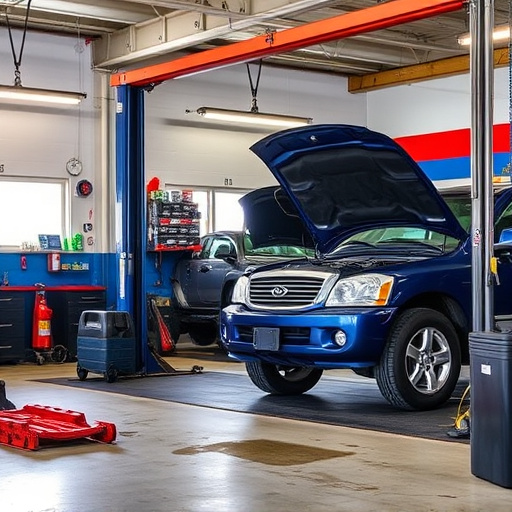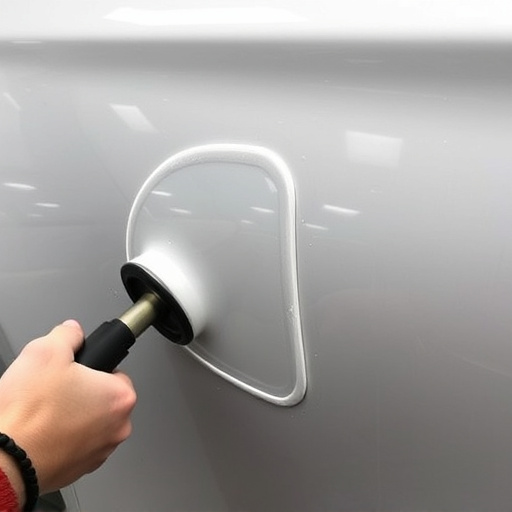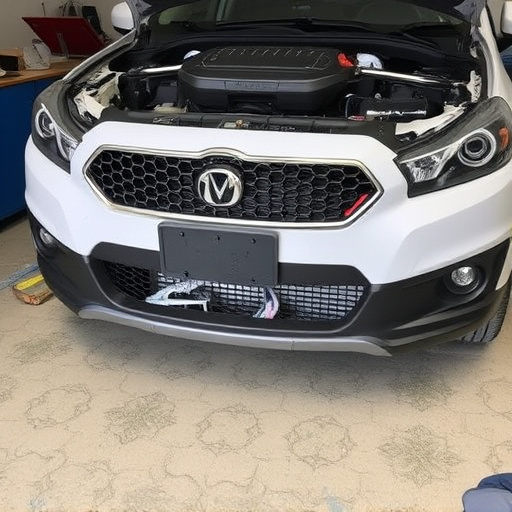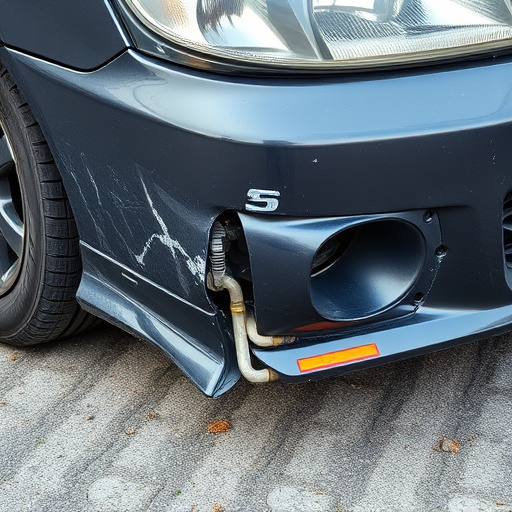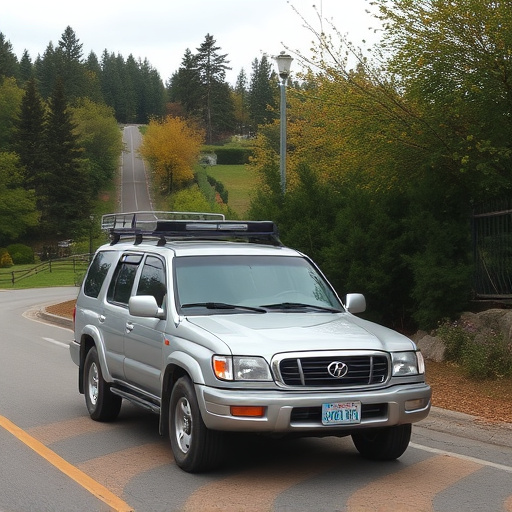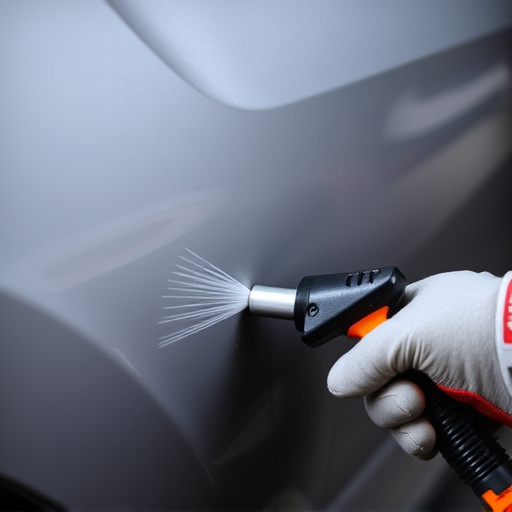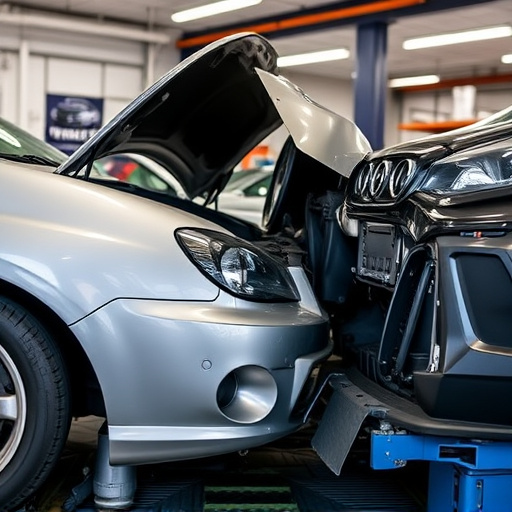Heavy-duty truck collisions result from driver errors, weather, and distracted driving, requiring inspections, maintenance, and training to prevent. Legal liability determination involves state laws, federal regulations, and evidence like driver logs, vehicle records, and eyewitness accounts. Experts investigate collision fault through pattern analysis, data reconstruction, and examination of safety protocols, with auto collision centers preserving evidence for legal proceedings.
In the realm of transportation, heavy-duty truck collisions pose significant challenges and complexities in terms of liability. These incidents often result in severe damage, injuries, or even fatalities, necessitating a thorough understanding of fault determination. This article explores the intricate dynamics of heavy-duty truck collisions, delving into their causes, the legal framework governing liability, and effective strategies to establish responsibility. By examining these aspects, we aim to provide insights for all stakeholders involved in minimizing risks and ensuring accountability.
- Understanding Heavy-Duty Truck Collision Causes
- Legal Framework for Liability Determination
- Strategies to Establish Fault and Responsibility
Understanding Heavy-Duty Truck Collision Causes

Heavy-duty truck collisions can result from a variety of factors, making it crucial to investigate and understand the underlying causes. These large vehicles, often used for transporting heavy goods over long distances, are subject to unique challenges on the road. One common cause is driver error, which may include speeding, inadequate maintenance of the vehicle, or fatigue due to extended driving hours. Additionally, mechanical failures, such as broken brakes or defective tires, can lead to serious accidents. Poor weather conditions, like heavy rain or snow, also play a significant role, affecting visibility and road grip. Furthermore, distracted driving, whether from mobile phones or other distractions, is a growing concern in the trucking industry.
Regular vehicle inspections and maintenance are essential to mitigate these risks. Ensuring that truck engines, brakes, tires, and lights are in optimal condition can prevent many accidents. Moreover, training drivers on defensive driving techniques and enforcing strict adherence to safety regulations can significantly reduce heavy-duty truck collisions. In case of a collision, automotive repair services specializing in large vehicles are required to handle the damage, including potential vehicle paint repair and complex mechanical fixes, ensuring safe operation once again.
Legal Framework for Liability Determination

The legal framework for determining liability in a heavy-duty truck collision involves a complex interplay of state laws and federal regulations. Each jurisdiction has its own set of rules regarding negligence, strict liability, and contributory fault. In cases involving commercial vehicles, such as 18-wheelers, the guidelines are often more stringent to ensure safety and accountability on the road. The primary goal is to identify the at-fault party, which could be the driver, the trucking company, or even manufacturers of faulty parts.
Key factors in these investigations include driver training, vehicle maintenance records, logs, and eyewitness accounts. An auto collision center or collision center may play a crucial role in gathering evidence like repair histories and inspection reports to establish liability. Furthermore, understanding the regulations set by the Department of Transportation (DOT) is essential, as it oversees safety standards for commercial vehicles, including regular inspections and driver fitness requirements. These measures collectively help navigate the legal landscape surrounding heavy-duty truck collisions and determine responsibility.
Strategies to Establish Fault and Responsibility
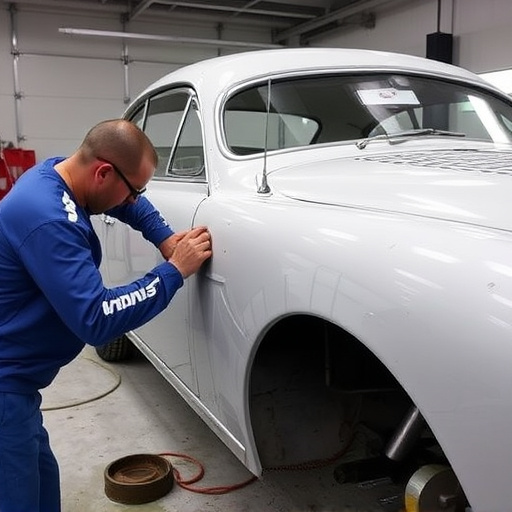
In the aftermath of a heavy-duty truck collision, establishing fault and responsibility is a meticulous process that demands strategic precision. Investigators employ a multi-faceted approach to unravel the incident’s intricacies. They scrutinize evidence such as vehicle damage patterns, crash reconstruction data, and driver logs to understand the sequence of events accurately. These strategies help in identifying if driver error, mechanical failure, or external factors contributed to the collision.
Furthermore, understanding the dynamics of heavy-duty truck operations is crucial. This includes assessing maintenance records of vehicles, compliance with safety regulations, and driver training programs. Established auto collision centers and automotive body work experts play a vital role in providing detailed repairs and evidence for liability claims. Their expertise in vehicle collision repair ensures that every component related to the crash is meticulously examined, preserving critical clues that can assign fault and guide legal proceedings effectively.
Heavy-duty truck collisions can have severe consequences, making it crucial to understand the causes, legal framework, and strategies to establish fault. By delving into these aspects, we can ensure better liability determination and foster safety in the transportation industry. In terms of who’s at fault, a comprehensive understanding of both driver and vehicle responsibility is essential, especially with the increasing complexity of modern heavy-duty trucks. Ultimately, navigating these factors can revolutionize how we approach and prevent future collisions, making our roads safer for everyone.


